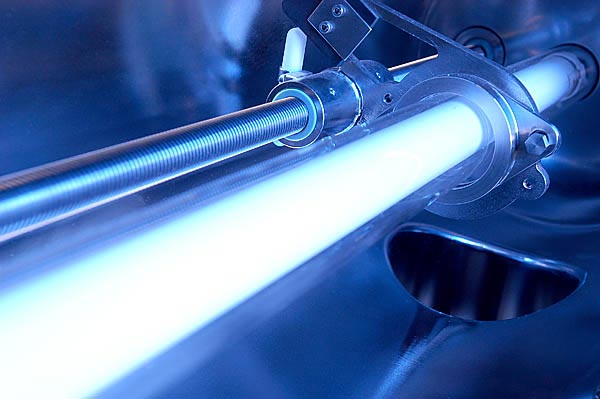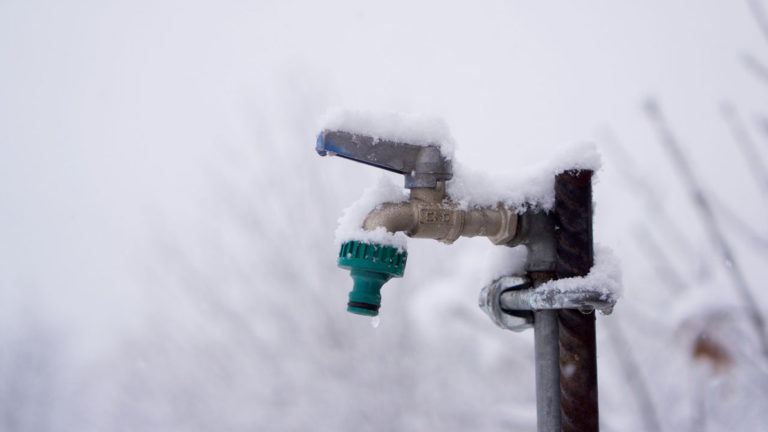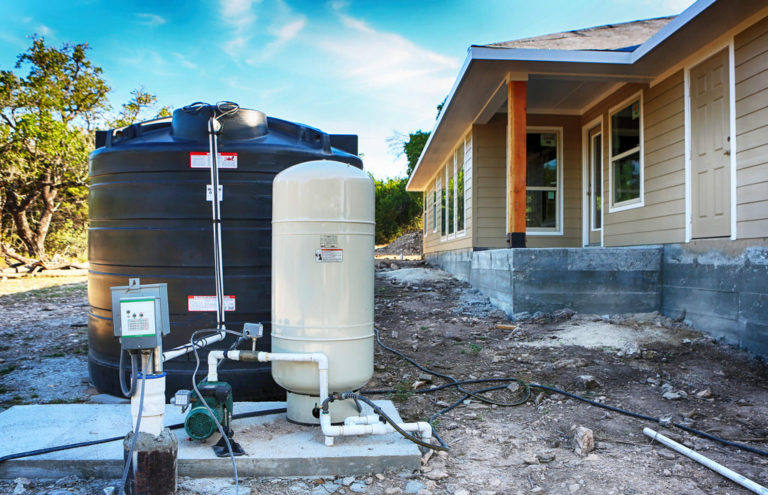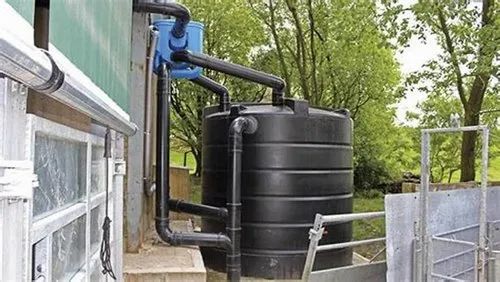Access to safe and clean drinking water is a basic human right, yet millions of people around the world are affected by contaminated water sources.
Traditional methods of water treatment, such as boiling or using chemical disinfectants, can be time-consuming, expensive, and harmful to human health.
Recently, ultraviolet (UV) light technology has gained attention for its potential to purify water without these drawbacks.
In this blog post, we’ll dive into the world of UV-C water purification and explore how you can use UV light to achieve clean and safe drinking water.
Understand the basics of UV-C water purification
UV-C light is a form of ultraviolet light that is used to kill bacteria, viruses, and other microorganisms in water. It works by damaging the DNA of these organisms, making them unable to reproduce and cause illness.
This form of ultraviolet light is specifically designed to target and eliminate bacteria, viruses, and other microorganisms that can cause illness.
The active agent in UV-C light is its high-energy radiation, which penetrates the cell membrane of these microorganisms and damages their DNA.
This damage prevents the microorganisms from reproducing and causing further harm.
The process of UV-C light disinfection is simple and effective.
When microorganisms are exposed to UV-C light, the DNA-damaging effects occur almost instantly.
This means that within seconds of exposure, the microorganisms are rendered unable to reproduce and cause illness.
The UV-C light is effective against a wide range of microorganisms, including bacteria, viruses, and fungi.
One of the key benefits of UV-C light disinfection is its non-toxic and environmentally friendly nature.
Unlike chemical disinfectants, UV-C light does not leave behind harmful byproducts or residues, making it a safer choice for families and communities.
UV-C light is easy to use and maintain, requiring only a simple installation process and regular cleaning of the light fixtures.
UV-C light is a reliable and effective method for disinfecting water and killing harmful microorganisms.
Its non-toxic nature and ease of use make it a popular choice for families and communities looking to safeguard their health and well-being.
Know the differences between UV-C and UV-A/B
UV-A and UV-B are other forms of ultraviolet light, but they are not as effective at killing microorganisms as UV-C. UV-A and UV-B are more effective at penetrating water, but they may not be as effective at killing all types of microorganisms.
UV-A and UV-B are two other forms of ultraviolet light that, while less effective at killing microorganisms compared to UV-C, have their own unique benefits and limitations.
While UV-A and UV-B are better at penetrating water, they may not be as effective at killing all types of microorganisms.
UV-A has a longer wavelength than UV-B and penetrates more deeply into water, but it may not be as effective at killing bacteria and viruses.
UV-B, on the other hand, has a shorter wavelength and is more effective at killing bacteria and viruses, but it may not penetrate as deeply into water.
When considering the use of UV light to disinfect water, it’s important to consider the specific needs of the situation and choose the appropriate wavelength of UV light based on those needs.
Understand the factors that affect UV-C effectiveness
The effectiveness of UV-C light in killing microorganisms can be affected by several factors, including water temperature, pH level, and the presence of organic matter. Make sure you understand these factors and how they may affect the performance of your UV-C system.
The effectiveness of UV-C light in killing microorganisms is heavily dependent on several factors, including water temperature, pH level, and the presence of organic matter.
Water temperature affects the rate of microbial inactivation, with higher temperatures leading to faster inactivation.
For instance, a study by the World Health Organization found that UV-C light inactivated 99.9% of E.
Coli bacteria at a temperature of 20°C, but the same inactivation rate was achieved at 10°C within 20 seconds.
The pH level of the water affects the effectiveness of UV-C light.
Microorganisms such as bacteria and viruses are more susceptible to UV-C light at lower pH levels, as the UV light can penetrate more easily through the cell membrane.
Furthermore, the presence of organic matter can interfere with the effectiveness of UV-C light.
Organic compounds such as humic and fulvic acids can absorb UV light, reducing its effectiveness in killing microorganisms.
In fact, a study by the American Water Works Association found that the presence of humic acids in water reduced the UV-C light’s inactivation rate of E.
Coli bacteria by 50%.
Therefore, it is essential to understand these factors and how they may affect the performance of your UV-C system to ensure optimal disinfection and safety of the treated water.
Learn about the benefits of UV-C water purification
UV-C water purification can provide several benefits, including improved water quality, reduced risk of waterborne illness, and extended shelf life. It can also be more cost-effective and environmentally friendly than other water purification methods.
UV-C water purification offers several advantages over other water purification methods.
For one, it provides improved water quality by effectively disinfecting harmful bacteria, viruses, and other microorganisms.
This reduces the risk of waterborne illness and ensures the water is safe for consumption.
UV-C purification is more cost-effective than other methods, such as chemical disinfection, which can save money in the long run.
Moreover, UV-C purification is an environmentally friendly option as it does not produce harmful byproducts or residues, making it a sustainable choice for communities and businesses alike.
By adopting UV-C water purification, individuals and organizations can enjoy improved water quality, reduced risks of waterborne illness, and a more sustainable future.
Consider the maintenance requirements of UV-C systems
UV-C systems require regular maintenance to ensure they are functioning properly and effectively. This may include replacing lamps, cleaning the system, and monitoring the water quality.
Regular maintenance is important to ensure the optimal functioning and effectiveness of UV-C systems in water treatment.
One of the primary components that require periodic replacement is the lamps, which can wear out over time due to frequent use.
These lamps need to be checked and replaced every 12 to 18 months, depending on the manufacturer’s recommendations and usage patterns.
In addition to lamp replacement, the UV-C system must be cleaned regularly to remove any sediment or debris that may have accumulated.
This can be done by cleaning the quartz sleeve and the reflector with mild detergents and water.
Monitoring the water quality is also essential to ensure the UV-C system is working effectively.
This involves measuring the residual UV dose, which should be within the recommended range for disinfection.
Understand the certification and regulations for UV-C systems
UV-C systems must meet certain certification and regulatory requirements to ensure they are safe and effective. Make sure you understand these requirements and that your system meets them.
When selecting a UV-C system for your healthcare facility, it is important to ensure that the system meets strict certification and regulatory requirements to guarantee its safety and effectiveness.
The UV-C system must be certified by a reputable third-party testing organization, such as NSF International or UL (Underwriters Laboratories), to confirm that it meets rigorous safety and performance standards.
The system must comply with various regulations, such as those set by the U.S.
Food and Drug Administration (FDA) and the Centers for Disease Control and Prevention (CDC), to ensure that it is safe for use in healthcare settings.
To ensure that your UV-C system meets these requirements, it is essential to consult with a qualified professional, such as an infection preventionist or a healthcare engineer, to review the system’s specifications and ensure that it is properly installed, maintained, and operated.
Proper training and education of facility staff on the proper use and maintenance of the system is also critical to ensure its effectiveness and safety.
By taking these steps, you can be confident that your UV-C system is safe and effective in reducing the spread of healthcare-associated infections (HAIs) and protecting the health and well-being of your patients, staff, and visitors.
Learn about the different types of UV-C systems
There are several types of UV-C systems available, including low-pressure and medium-pressure systems. Understand the advantages and disadvantages of each type and select the one that best fits your needs.
When considering a UV-C system for your disinfection needs, it is essential to understand the various types available and their advantages and disadvantages.
Low-pressure systems are cost-effective and simpler to maintain, but may not be as effective for harder-to-reach areas.
Medium-pressure systems offer greater flexibility and coverage, but are more expensive and require more maintenance.
Understanding your specific needs and the unique features of each system will help you select the best fit for your application.
Advantages of low-pressure systems include
* Cost-effective
* Simpler to maintain
Disadvantages of low-pressure systems include
* Limited coverage and reach
* May not be effective for harder-to-reach areas
Advantages of medium-pressure systems include
* Greater flexibility and coverage
* More effective for harder-to-reach areas
Disadvantages of medium-pressure systems include
* Higher cost
* Requires more maintenance
By understanding the advantages and disadvantages of each system, you can make an informed decision and select the best UV-C system for your specific needs.
Factors such as the size of the area to be disinfected, the type of surface being treated, and the level of disinfection required should all be considered when choosing a system.
Consulting with a professional and considering the warranty and support offered by the manufacturer can help ensure the best selection for your application.
Want More? Dive Deeper Here!
Hey there! If you’re the type who loves going down the rabbit hole of information (like we do), you’re in the right spot. We’ve pulled together some cool reads and resources that dive a bit deeper into the stuff we chat about on our site. Whether you’re just killing time or super into the topic, these picks might just be what you’re looking for. Happy reading!
- Ultraviolet Irradiation: An Age-Old Emerging Technology for Water Treatment–Karl G. Linden | Frontiers of Engineering: Reports on Leading-Edge Engineering from the 2007 Symposium | The National Academies Press
- UV Lights the Way | The Current
- Portable Water Purifier ‘Blue Life’ Wins Imagineering Competition | College of Engineering






